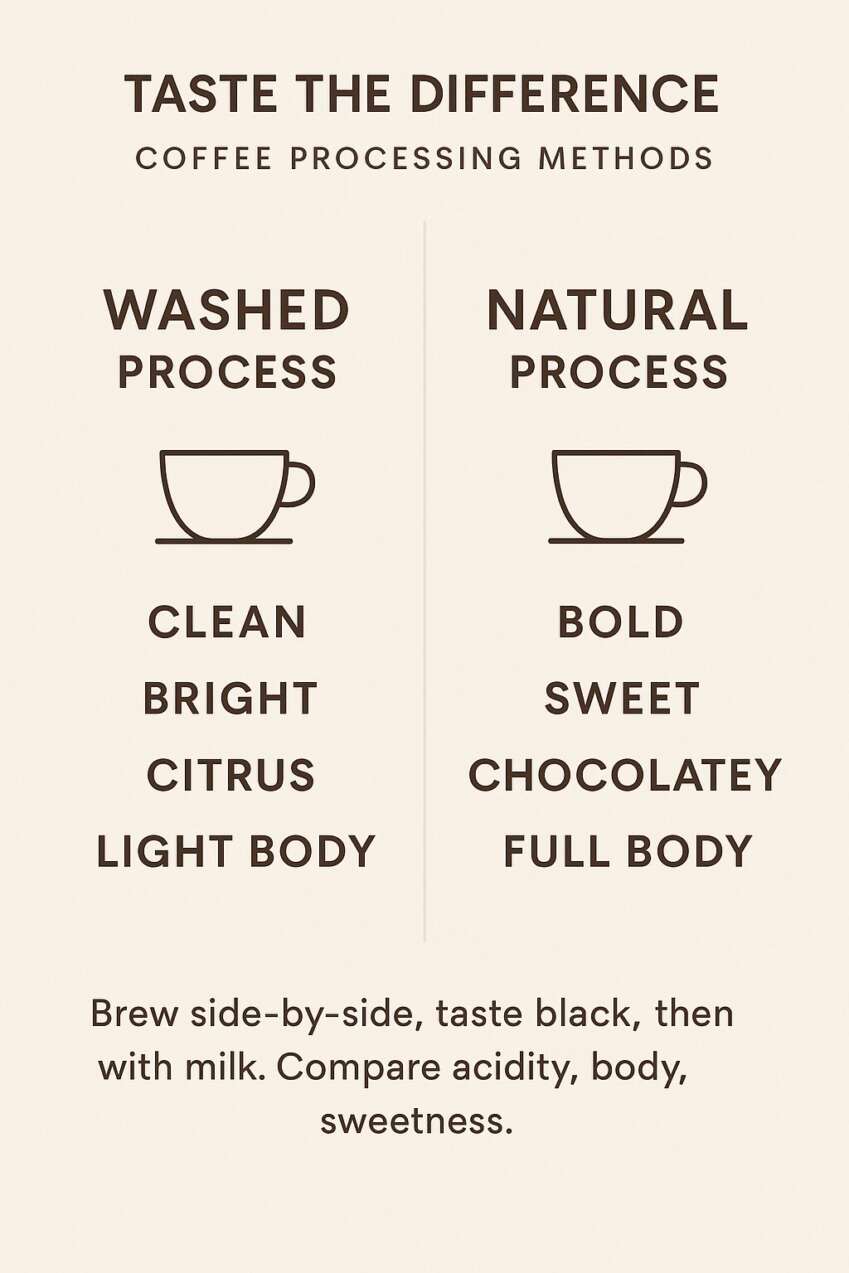Which coffee processing method is best?
Coffee processing methods explained – a coffee roaster’s perspective.
If you buy coffee online, from Dreambeans or from anyone else, the chances are you’ve come across terms like “washed,” “natural,” or “honey process” in the descriptions. This can feel a bit like coffee jargon, and to most people, these are relatively new terms and they can sometimes cause confusion. Although processing is important, it’s often overhyped or misunderstood.
I want to break it down simply, and give you the Dreambeans view on coffee processing. This post isn’t about technical jargon, it’s about what processing really means for you, the home user, and how it shows up in the cup.
Tldr: there’s no single “best” method. It all depends on the bean, the region, and what you’re after in your brew. For my money, the quality of the bean is what’s most important, because no processing technique is going to make a bad bean into a good bean, no matter what you do. Conversely, the quality of a great bean will shine through, and a great bean will remain great whether it’s washed or naturally processed
What Is Coffee Processing, Anyway?
Processing is what happens to the coffee cherry after it’s picked and before it’s roasted. It’s how the outer layers (or pulp) of the coffee fruit are removed from the seed (which we call the “bean”).
There are three main methods:
- Washed (or wet processed): Fruit pulp is removed before drying. Known for giving clean, bright, crisp flavours.
- Natural (or dry processed): Whole cherries are dried with the fruit pulp still on. This can create bold, fruity, and heavier-bodied coffees.
- Honey Processed: Somewhere in between, some fruit is left on during drying. Can produce sweetness and balance.
Each method influences flavour but it’s just one piece of a complex puzzle that includes, roasting, blending, handling and packaging.

What we’ve learned from roasting washed vs. natural coffees
We roast coffee nearly every day here at Dreambeans, so we get to work closely with each bean’s personality and we learn its characteristics over time.
In our experience, processing really shows up during roasting and in making coffee, but not always in predictable ways. We’ve roasted washed beans that came out juicy and sweet, and naturals that were more subtle than expected.
I definitely don’t have a “favourite” process and I definitely don’t consider processing to be the most important piece of the puzzle. The best process is the one that suits the particular bean and the conditions in which it was grown and harvested. The same beans from the same coffee bush might suit a different process in a wet year than they would in a dry season. A great washed Ethiopian is a world apart from a washed Colombian, and that’s what makes coffee fascinating. I can never understand when people tell me they only like washed coffee or they only drink matural. It doesn’t always make sense to view it as a binary outcome. With coffee, it isn’t always a one or a zero.

Two real examples from Dreambeans
Here’s how different processing methods show up in coffees we roast and sell right now:
Rising Tide Blend – Featuring Washed Ethiopian Yirgacheffe
This one’s all about clarity. The washed Ethiopian in this blend brings bright citrus and floral notes. If you’re into clean-tasting coffee with a great body, this is a great place to start.
Jaggy Loko Blend – Featuring Natural Brazil
The natural Brazilian adds body and sweetness. You’ll notice rounder, chocolatey notes, maybe even some dried fruit. It’s a fuller, bolder cup that holds up well with milk or as espresso.
Try It Yourself: A Home Tasting Guide
Want to taste the difference? Here’s a simple home brewing experiment using Rising Tide and Jaggy Loko.
- Grind and Brew Side-by-Side
Brew both coffees using the same method (eg, French Press, V60, AeroPress) and quantities. Try to keep everything identical except the coffee. - Taste Without Milk First
Start by tasting both black. Pay attention to:- Acidity (sharpness, fruitiness)
- Body (weight or thickness in your mouth)
- Sweetness
- Aftertaste
- Add Milk if You Usually Do
See how the flavours shift. Naturals often hold up better with milk due to their body. - Take Notes, Even Just a Few Words
Fruity, clean, round, earthy… whatever stands out.
This kind of tasting can teach you more in 15 minutes than reading 10 blog posts. And the best part? You’re drinking great coffee the whole time.
My Take: There’s No Best Process, Only the Best Fit
Some roasters chase trends, anaerobics, experimental fermentations, and so on. I’m more interested in balance. I ask: does the process bring out the best in the bean?
Sometimes that’s a delicate washed coffee with floral notes. Sometimes it’s a big-bodied natural that pairs beautifully with chocolate.
At Dreambeans, we look for beans that shine, and we roast them properly to show off what makes them great, not to fit a trend.
Final thoughts
Processing matters, but it’s not the whole story. Terroir, variety, roasting, and brewing all play a part. Still, understanding the basics helps you identify the differences more easily.
If you want to explore, our Rising Tide and Jaggy Loko blends are a great place to start.
Give them a taste and see what coffee processing means to you.
Pat McArdle

